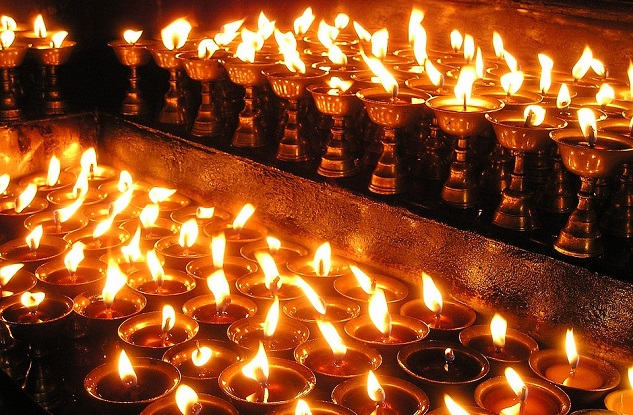
One of my aims in my latest trip to Kathmandu was to find a place where I could immerse myself in local culture, yet not be too far from the action. While it has become a national pastime in the Himalayan country to complain about the traffic jams in Nepal’s capital, they pale in comparison with what one witnesses in Bangalore or Mumbai. I still wanted to be close enough to the center, but away from the tourists.
The oasis of Siphal
Before my June visit, I had never heard of Siphal and Jaya Bageshwori. Thanks to AirBnb, I came across a highly cultured family that was renting out a couple of rooms in the upper floor of their beautiful home.
Located in Siphal, a neighborhood that was a short walk away from Pashupatinath and a longer walk to Komal Pokhari and minutes away by local bus to many of the important areas of the city, the home made me feel like a resident of Kathmandu. Although the trip was brief, I had gone from being a visitor to the Nepalese capital to someone who was living there.
Instead of the pizza places and Chinese restaurants of Thamel or the Tibetan eateries of Boudha, I found a large share of Newari Khaja Ghars (places serving traditional Newari cuisine), momo joints and simple Nepali tea shops that displayed donuts, sweets, pakoras and various forms of cooked potatoes.
This was the real Kathmandu, where people sat for their meals or snacks over long conversations as roadside traffic and the monsoon rains passed. While the food joints in touristy areas are establishments catering almost exclusively to foreigners and Nepalese in the travel industry, Siphal’s cafes and tea shops are a great place for locals to socialize.
Lighting lamps for Ganesha
Kathmandu is the land of Pashupatinath and it clearly feels like there are more shiv lingams in the city than people. Each one of these small lingams looks like they have been there since time immemorial. There are also small statues of a variety of gods.
One particular shrine in Jaya Bageshwori, an even more quaint and traditional neighborhood that adjoins Siphal, is a Ganesha temple that locals say dates back to the 17th century. This is a community temple that lacks a priest but is managed by local residents and shopkeepers. Each time I walked past this old temple, I rang the bell, as did many other passers-by.
On a full moon night before I left back for Mumbai, I asked a spinach seller sitting just outside if she knew how I could pay for each of the lamps outside the temple to be lit. After all, such requests can be made in many Hindu temples in India. She looked at me for a minute in a strange manner and then asked me to buy wicks, oil and a matchbox and do it myself. That was simple enough!
There were a total of 102 lamps surrounding the shrine, so this was going to take a lot of time and effort. I also had to deal with a pre-monsoon breeze that seemed to deliberately mock my attempts to light up my favorite roadside temple. I persisted, occasionally burning a finger or two and managed to keep all the lamps burning. By the time a few locals saw how serious I was, they pitched in and the local community Ganesh temple was as brightly lit as on Diwali.
As an agnostic, this exercise was purely something I indulged in for cultural reasons. Tired and weary from what seemed like a massive effort I walked towards one of the main thoroughfares of the city and saw the rising full moon shining a surreal light on a Buddhist temple. The white light shined on the unlit temple, making it possible to see a silhouette. The abandoned square surrounding the temple is a hub of activity in the mornings when a visitor can smell the fragrance of incense sticks and listen to devotional songs to Maya Devi, and watch men wearing traditional hats indulge in conversation while women feed pigeons.
Here lay the real Kathmandu, free of tourists and shoppers. A visitor to these parts would not see a large difference from how this place looked and felt a few decades ago and now. This was a place where one could see the sheer ethnic diversity of Nepal — faces reflecting Himalayan, Tibetan, Indian, Chinese and Central Asian heritages, a meeting ground for civilizations, and a place where any Asian could blend in without hindrance.
* * *
Ajay Kamalakaran is a writer based in Mumbai. His first work of fiction, Globetrotting for Love and Other Stories from Sakhalin Island, was published in July 2017.












